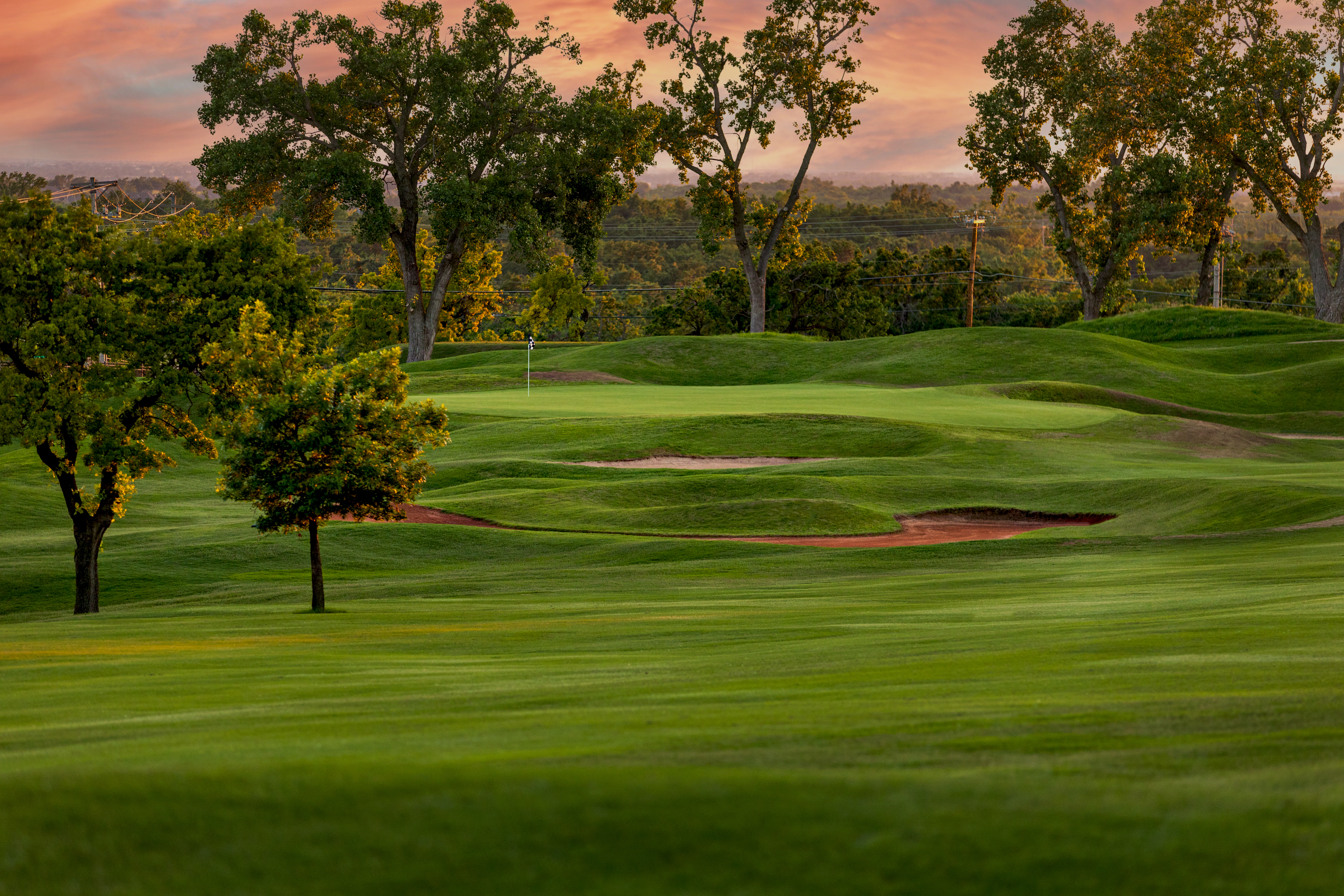Pete Dye Golf Courses
Natural, Serene and Distinctive
For some fifty years, the name Pete Dye has been synonymous with innovative golf course design. Over the decades, his body of work has resulted in some of the greatest courses of the modern era. Harbour Town, Ocean Course, TPC Sawgrass, Whistling Straits, The Honors Course, PGA West's Stadium Course. All are in the pantheon of great modern courses; all were envisioned and executed by Pete Dye. His method was a handshake deal and an intensive examination of the land in question, walking the terrain repeatedly until a vision of a golf course began to form in his mind. The only word that can adequately describe his unique ability: genius1.
After designing the Golf Club course in the mid-1970s, original Oak Tree owners, Joe Walser and Ernie Vossler of Landmark Land Company, brought Pete Dye back in the early 1980s to replicate the success he'd already had in the Oak Tree neighborhood. In 1981, Oak Tree Country Club was established to provide a full-service country club for families in the Edmond and Oklahoma City area.
The two country club courses, both playing to a par of 70, with just one par-5 per side, intermingle with some consistency. But the East is the championship test, far more exacting in its demands than the roomier West Course. The watery final stretch - the half-dozen holes heading toward the clubhouse - showcases the ferocity of the course. The East Course continues to serve as host venue for the highly-regarded Oklahoma Open, traditionally one of the most sought-after state titles in the land. Stalwarts like Bob Tway, Gil Morgan, David Edwards, Todd Hamilton and Lucas Glover are among the champions who have been crowned1.
"The easiest holes on the East Course are less demanding than the few easy ones across the street at the Golf Club {Oak Tree National}," offers golf course architect Mark Hayes, an Oklahoma native and former Ryder Cup player with three PGA Tour victories on his resume. "But I think the toughest holes on the East are as tough as the hardest holes at the Golf Club. They are just about all you want. Even during the Oklahoma Open, they almost never use the way-back tees. It would be too difficult1."
The East Course is a tough slog from the outset. Forget the tips at nearly 7,100 yards; even from the 6,400 -yard middle markers, the half-dozen front-side par-4s average 410 yards. It's a bunker-strewn landscape, humps and hollows wreaking havoc with shots drifting from the short grass. It's a stiff enough challenge, but merely a preamble to the watery finish. Four of the final six, including a pair of distinctive par-3s are completely menaced by water. The West Course, has a multitude of bunkering throughout, and Dye has made liberal use of periphery greenside mounding, so offline approaches will lead to awkward stances and angles toward the pin. The best illustration of such is the par-5 7th, where the final fifty yards is a sand-strewn loop-de-loop. Water is less of a presence than on the East Course, but there are several shots sure to intimidate those with aquaphobia, the tee shot on the par-3 14th being the most notable. Several of the greens have some serious contour, the par-4 12th and 17th being prime examples1.
Both the East and West courses were built on rolling terrain. Both courses have five ponds that come into play on five holes.




